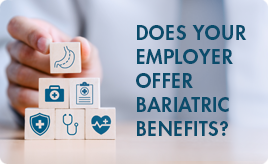 Patients considering weight loss surgery may be confused by the various options available. What are the differences between the main weight loss surgery options and how do you know which is best for you?
Patients considering weight loss surgery may be confused by the various options available. What are the differences between the main weight loss surgery options and how do you know which is best for you?
There are three main surgery options: Gastric Bypass, Gastric Sleeve and Lap-Band. The primary difference between the three is their mechanism of action. Knowing which surgery is right for you depends on your specific needs. For example, do you need portion control or would you benefit more from appetite suppression? There is no generic answer to the question as to which surgery is best, but those questions can be answered with you meet with a doctor in person.
These are the basic facts about the main types of surgery available and the differences between them.
Gastric Bypass
Gastric Bypass surgery is a portion control and appetite suppression surgery. This procedure makes the stomach smaller and allows food to bypass part of the small intestine. A small pouch is created at the top of the stomach and is connected directly to the middle portion of the small intestine.
Gastric Bypass surgery will cause you to feel more full quicker because your stomach cannot hold the amount of food it once could. The smaller stomach reduces the number of calories consumed and the “bypass” reduces the number of calories absorbed by your body.
Gastric Bypass surgery is considered a higher risk surgery and is not reversible. On average, patients who undergo Gastric Bypass surgery lose 70 to 80 percent of their excess weight in one year.
Sleeve Gastrectomy
Also known as the Gastric Sleeve, this procedure may be the best option for you if you are concerned about the potential side effects of Gastric Bypass. The Gastric Sleeve generates weight loss by reducing stomach volume by dividing the stomach vertically and resecting the portion of the stomach that produces the hunger hormone, ghreline, resulting in a diminished appetite.
Sleeve Gastrectomy is a lower risk surgery than Gastric Bypass, but higher risk than Lap-Band/Realize Band surgery. Resulting weight loss for the average Gastric Sleeve patient is typically between the resulting weight loss from Gastric Bypass (70 to 80 percent) and Lap-Band (36 to 40 percent).
Lap Band
Lap Band surgery is strictly for portion control. It reduces the capacity of the stomach and restricts the amount of food that can be consumed. Much like a wristwatch, the Lap-Band is fastened around the stomach, allowing you to feel full and satisfied with a smaller amount of food.
The Lap-Band can be adjusted (made tighter or looser) depending on a patient’s needs. It is also the only weight loss surgery available in the U.S. that is completely reversible.
Because this procedure does not involve any cutting, stapling or intestinal rerouting, it is considered a lower risk surgery than Gastric Bypass. On average, Lap-Band patients lose 36 to 40 percent of their excess weight in one year, and an average of 60 to 65 percent in three to five years.
If you are considering weight loss surgery, schedule an appointment with The Nicholson Clinic staff to discuss your personal needs and determine which option is best for you.












